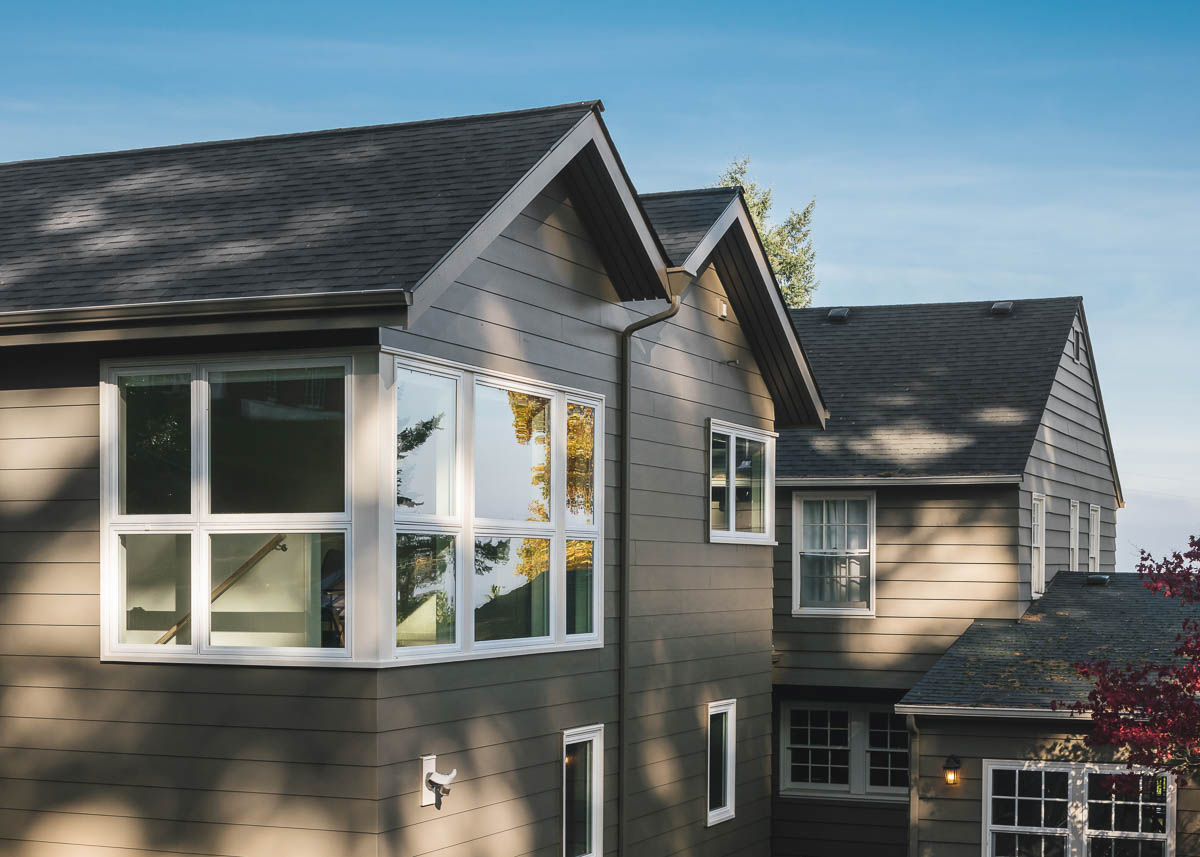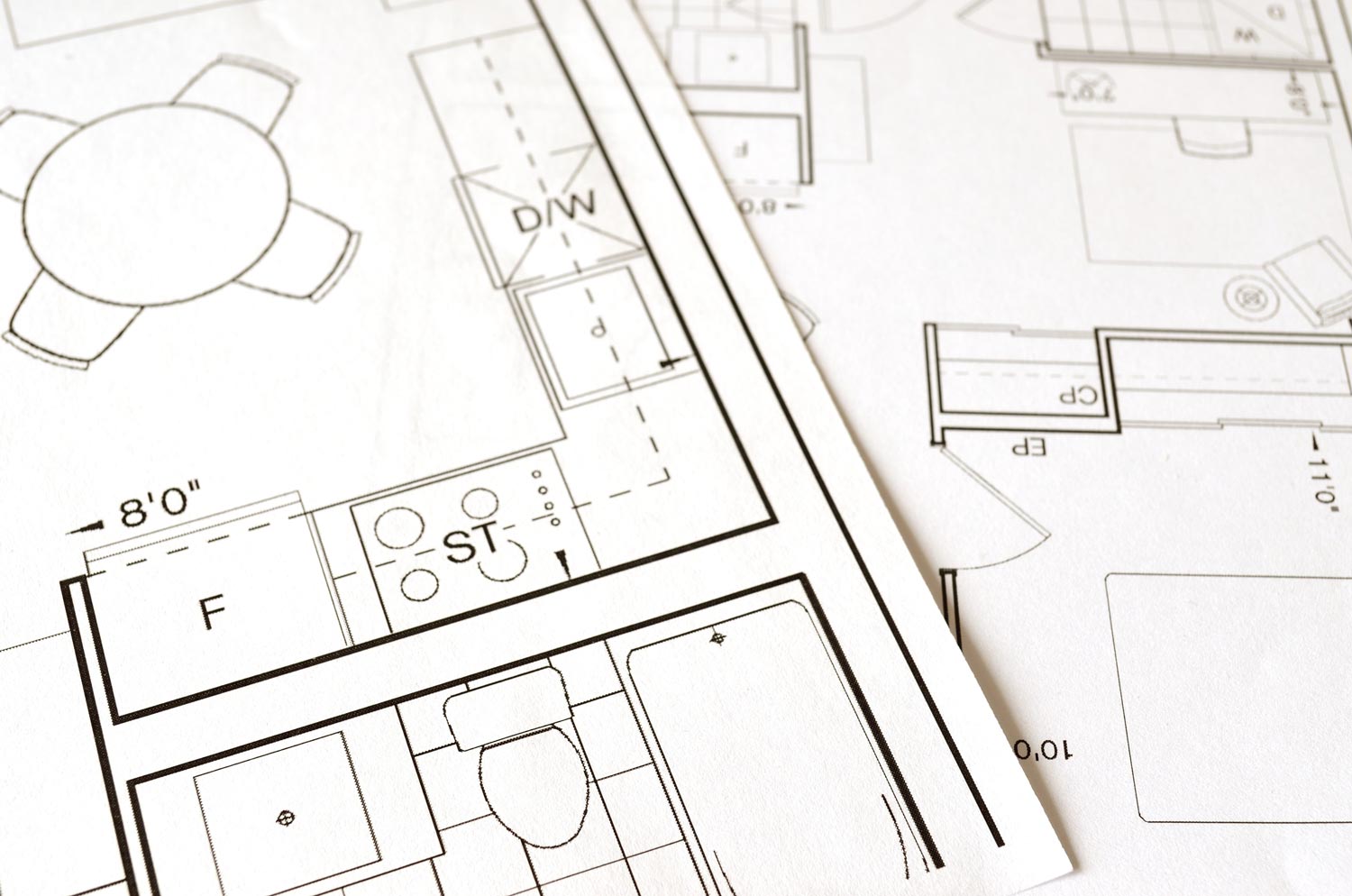
Do you love the idea of moving into a great neighborhood? Have you always dreamed of building a brand new custom home that has everything you love? What if you could do both?
Residential infill building (sometimes called suburban or urban infill) is an option in many beautiful neighborhoods. It can be a perfect solution for people who want a custom home in a central location.
What is infill development?
Residential infill development involves developing vacant or underused property in urban or suburban neighborhoods.
This often involves revitalizing run-down lots. In other cases, it involves subdividing lots or adjusting lot lines, so that the space between two houses can be converted into a new lot where a house can be built. Think of it as “filling in” unused space in neighborhoods.
The City of Portland, where Hamish Murray Construction Inc. is based, has proposed changes that would allow more residential infill building, including single homes, duplexes, triplexes, and fourplexes.

Benefits of residential infill building
The most obvious benefit is the chance to build a brand new custom home in an already established community. If you have your heart set on a particular neighborhood, you don’t have to wait for a less-than-perfect house to become available — you can design your own!
Residential infill building also comes with a few other benefits, including:
- The chance to live closer to schools, parks, and work
- A shorter commute to the city
- Utilities already in place
- The option to live in a more walkable neighborhood
Infill development can also be an environmentally sustainable option. When you choose the right neighborhood and build conscientiously, urban infill:
- Takes advantage of existing infrastructure, which means fewer resources are required for building
- Prevents suburban sprawl, thus protecting open space, farmland, scenic landscapes, and environmental assets
- Contributes to creating walkable/bikeable neighborhoods, which reduces the need for driving

Is there a downside?
The biggest downside is that there are often restrictions on the size (and sometimes the layout) of new homes. As you can probably imagine, residents in neighborhoods with a lot of infill development also typically have smaller yards. These restrictions will depend on the size and shape of your lot as well as government regulations in your area, so choosing the right lot in the right neighborhood is important.
Not everyone will view these issues as downsides, though. Smaller homes and smaller yards are often very attractive options for young professionals, empty nesters, and people who prefer a minimalist, low-maintenance lifestyle.
Tips for successful residential infill building
Some neighborhoods have HOA restrictions that prevent people from building houses that are too different from others in the area. But even if there is no HOA, following these tips can:
- Add value to your property
- Increase your enjoyment of your new home
- Ensure your home contributes positively to the neighborhood, making it an even more desirable place to live

Choosing the Right Lot
Before you settle on a lot in your favorite neighborhood, you want to make sure it is truly compatible with the custom home you are imagining. If you want a big home or a big yard, lot selection is especially important.
Building Height
Infill building sometimes involves building on narrow lots. In fact, that is one of the limitations of urban building in general. When dealing with a small lot, homeowners are often tempted to give themselves more space by building upward. This can be a great solution! Just be aware of how high your new house will be compared to other nearby homes.
Trees
One of the biggest complaints that both existing and new residents often have about infill development is the loss of trees. Trees provide shade and increase your home’s value, so finding ways to keep trees on your property is a win-win.
Home Style
Are you moving into a district full of historic homes? Will your new home be in a suburban area where everyone has a driveway and garage at the front of the house? If you want your home to blend in, your architect and builder can help you plan a custom home that both complements your neighborhood and contains the features, designs, and personality you want.

Is residential infill building right for you?
Do you love the idea of building a custom home in a great location? Do you want to live in an established neighborhood, maybe a centrally located one with great walkability?
Infill building may be the perfect solution for you!
At Hamish Murray Construction Inc., we specialize in custom homes, and we have the experience necessary to navigate local infill regulations and HOAs, so that you can build your dream home in a way that complements and enhances your life, your property, and the neighborhood where you live.
Do you have questions about how to get started with a residential infill project in the Portland, OR area? Do you want to talk about your building options? We can help! Call us at (503) 460-7203 or send us a message online.

